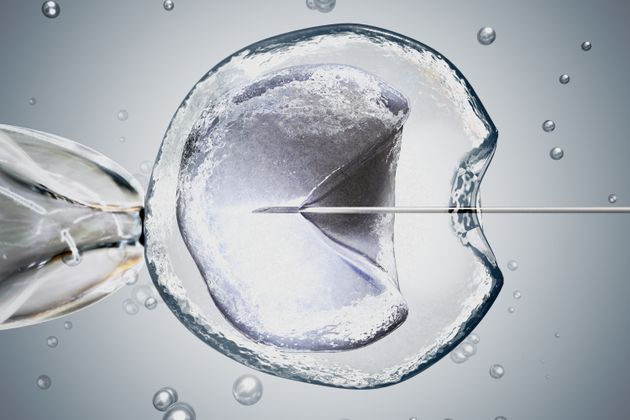
As Louise Brown, the world’s first “test tube” baby, turns 40, this month, we’re reminded of the joy IVF can bring to millions of people, worldwide. However, what is often forgotten is that IVF fails. Fact. It’s an incredibly sad truth and one which not everyone is aware of, initially, including me.
There’s a huge misconception that once a reason for infertility has been diagnosed and the recommendations for IVF followed, a baby shall be born nine months later. Yet, according to figures released by the HFEA (Human Fertilisation & Embryology Authority) out of just over 68,000 cycles of IVF, in the UK, in 2016, only 20,028 babies were actually born, as a result. Twenty-thousand is, of course, not remotely a number to be sniffed at, and each individual life, in that total, will have brought about such happiness, for so many longing parents-to-be. However, it does mean that, in reality, with each round of IVF, there’s only a 29% chance of conceiving and carrying a baby to term.
I’m sure we’ll all agree that whilst these odds do, indeed, offer hope, having a child via IVF is certainly not the given we imagine it to be.
Deciding to embark upon IVF can be an incredibly tough, and personal, decision. It’s a route some people choose not to go down and, of those who do, not everyone is successful. For me, it began as a relatively easy decision to make. At that point in time, the success rate was around 25%, which was enormously appealing: here we were being offered a realistic chance to have a child. There was hope, there were statistics and our odds were vastly improved, by In Vitro Fertilisation, than if we simply took a well-timed tumble once a month. Which, as we’d, grievously, discovered, was never going to get us anywhere.
My husband and I can’t get pregnant naturally. This was one of the first things we were told by everyone involved in the diagnosis our infertility. We went from, what we’d presumed was a slight struggle to conceive ourselves, to a pretty grim prognosis; in order for us to have a pregnancy, medical science was going to have to do its thing.
Despite knowing the odds weren’t great, I’d never thought we wouldn’t be successful on our first attempt. Why wouldn’t we? Problem found, treatment initiated, parenthood here we come. I naively thought that as we’re good people, we deserved it to work and ergo a bump shall be. I’ve since realised that having a child isn’t a meritocracy.
I was an incredibly compliant IVF virgin. I didn’t question methods or do any of my own research, why would I? This was something which would simply take over eight weeks of my life; then I’d never need to look back. I joined forums, with other bright-eyed, optimistic first-timers, all supporting each other through the scary, yet exciting, world of medication and surgical procedures, which would lead us ever closer to our guaranteed, waiting children. I did everything I was told to do, to the best of my out-patient capabilities, in order to get that positive result, which our first cycle would inevitably create.
But I learned, and kept on learning, the hard way. IVF fails. And when it does, it can end in miscarriage and ectopic pregnancy and shattered dreams.
Because I’d been so full of belief, in a positive outcome, I hadn’t ever thought about what happens next. I’d never looked past round one. Yet, like so many others, our pregnancy test, post IVF, was still lacking that second line we’d been so desperately dreaming off. There was no pregnancy. There was no baby. We’d injected, had surgery and done everything we could, for nothing. We’d merely found ourselves right back at the beginning, but this time shrouded in a cloak of grief, disappointment and anger.
Initially I didn’t ever believe that I’d be able to get past the pain I was experiencing. I was meant to be celebrating, planning and booking midwife appointments, not mourning. But, as many in the infertility community have also found, I was surprised by my resilience; after wondering how I’d ever find a way to be whole again, there I was, six weeks later, injecting and gearing up for round two. And then, over time, for the other cycles we added to our collection.
When IVF repeatedly fails it becomes harder to have hope. There are flashes of brilliant positivity, and breakthroughs of the older, more optimistic versions of self. However, with each cycle, the idealistic infertile is whittled away, replaced with the bitter, cynical and grieving model. Where IVF hadn’t provided me with the child I so fiercely craved, it had produced pain, it had broken me and my trust in life, leaving in its wake a shell of the carefree, happy-go-lucky person I used to be.
It came as a saddening shock to discover that IVF doesn’t always produce a positive pregnancy test, or pregnancy to term. That whilst it helps to create miracles, it’s not a miracle solution for all. Hindsight made me feel foolish I’d even imagined our first attempt might work, but it can and it does, just not for all of us. For some it can take cycle after cycle after cycle to achieve the desired outcome, gathering heartbreak along the way. Others are not so fortunate, they receive the grief without the blessing.
For those battling with infertility, a 29% chance of having a child, is an incredible feat. Medical science has indeed come a long, long way and, as someone who was, finally, able to conceive and bear a child through IVF, I am eternally grateful that I eventually became a statistic of success. However, with a 71% likelihood that IVF fails, there are no guarantees, no assurances, and even with the wonder of scientific wisdom, IVF will, unfortunately, not always work for all. Fact.
To read more about breaking the taboo around infertility and miscarriage visit thecuckoomama.co.uk